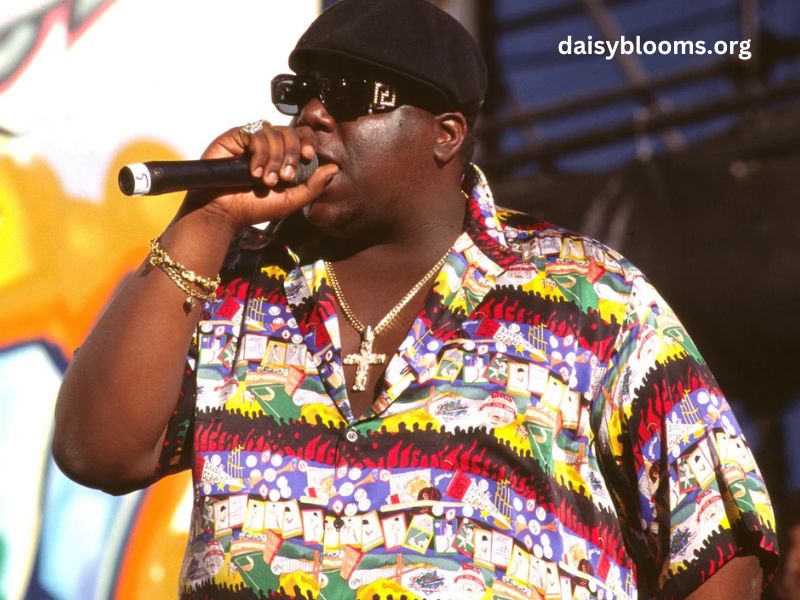Christopher George Latore Wallace, known to the world as Biggie Smalls or The Notorious B.I.G., was born on May 21, 1972, in Brooklyn, New York. Had his life not been tragically cut short on March 9, 1997, he would be 52 years old today. Despite his brief 24 years, Biggie’s impact on the music industry, particularly in hip-hop, remains profound and enduring.
Early Life of Biggie and Rise to Fame
Biggie grew up near the Bedford-Stuyvesant neighborhood of Brooklyn. For most of his education, he attended Roman Catholic school, where he excelled, but he later persuaded his mother to send him to a public high school. He eventually dropped out of school, however, and made money selling crack cocaine. After developing a talent for rap as a pastime, Wallace recorded a demo under the stage name Biggie Smalls. The recording came to the attention of Sean (“Puffy”) Combs, who then worked with Wallace at Uptown Records and in 1993 signed him to a new record label, Bad Boy Entertainment. Wallace’s first single as a solo artist, “Party and Bullshit,” was released the following year, and his first album, Ready to Die, was released in 1994 under the name The Notorious B.I.G. Popular singles from that album include “Juicy” and “Big Poppa”—the latter earning him a Grammy nomination for best rap solo performance. Both before and after the release of the album, he collaborated with a number of other artists, including Mary J. Blige and Michael Jackson.
Musical Contributions and Style
Biggie’s debut album, Ready to Die, was released in 1994 and received widespread critical acclaim. The album included signature tracks like “Juicy” and “Big Poppa,” which showcased his distinctive, laid-back lyrical delivery and storytelling prowess. His music was often semi-autobiographical, reflecting the hardships and criminality of his early life, as well as themes of debauchery and celebration. This album made him the central figure in East Coast hip-hop, helping to restore New York’s prominence at a time when the West Coast was dominating the genre.
The East Coast-West Coast Rivalry
Biggie’s rapid success was credited with single-handedly reviving the New York City-based “East Coast” hip-hop recording labels, which had been overtaken in prominence by the “West Coast” hip-hop labels based in Los Angeles. His work brought Bad Boy Entertainment into competition with Death Row Records in Los Angeles, and that competition in turn made its way into marketing. The rivalry became hyperbolized as an East Coast versus West Coast feud, although it was manifested primarily in a personal but public dispute between Wallace and his erstwhile friend Tupac Shakur.
Tragic Demise
On March 9, 1997, Biggie was leaving a party at the Petersen Automotive Museum in Los Angeles when he was killed in a drive-by shooting. The shooter and the motive remained unknown. Wallace’s second solo album, Life After Death, was released later that month.
Posthumous Releases and Honors
Following his death, Biggie’s influence continued through posthumous releases and tributes. His second album, Life After Death, debuted atop the Billboard 200 and yielded two Billboard Hot 100 number-one singles: “Hypnotize” and “Mo Money Mo Problems.” The album received diamond certification by the Recording Industry Association of America (RIAA). In 2020, he was inducted into the Rock and Roll Hall of Fame, further cementing his legacy in the music industry.
Family and Legacy
Biggie left behind two children: daughter T’yanna Wallace, born in 1993, and son Christopher Jordan “C.J.” Wallace, born in 1996. Both have actively worked to honor their father’s legacy. T’yanna runs her clothing brand, Notoriouss Clothing, as a tribute to her father and opened The Biggie Experience, an exhibit showcasing his life and impact. C.J. has pursued acting and entrepreneurship, playing a young version of his father in the biopic Notorious and establishing a lifestyle company named Frank White and the Think BIG initiative, promoting cannabis legalization and criminal justice reform.
Cultural Impact and Remembrance
Biggie’s legacy continues to be celebrated worldwide. In Brooklyn, murals and tributes honor his memory, and events are held to commemorate his contributions to music and culture. For instance, on what would have been his 50th birthday, the Empire State Building was lit in red with a crown on its mast in his honor.
Conclusion
Biggie Smalls’ influence on hip-hop and popular culture is undeniable. His storytelling, lyrical prowess, and distinctive style have inspired countless artists and continue to resonate with fans around the world. As we reflect on what could have been had he lived to see 52, we honor the indelible mark he left on the music industry and the world


